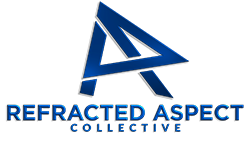
Identifying which part of your business has settled into “good enough” is not about assigning blame but about recognizing the hidden costs that quietly erode your competitive edge and operational efficiency. This article provides a clear, actionable perspective on where complacency may be costing you more than you realize and how to address it with precision.
- Pinpointing the Operational Gaps That “Good Enough” Masks
- Immediate Clarity on What “Good Enough” Is Costing Your Business
- Structural Dynamics That Entrench “Good Enough” in Your Business
- Uncovering Hidden Costs and Overlooked Connections
- Practical Interventions for Lean and Resource-Constrained Businesses
- Strategies for Scaling Teams Facing Operational Strain
- Approaches for Businesses Preparing for Succession or Transition
- Indicators That Show Improvement Beyond “Good Enough”
- Frequently Asked Questions
- Reframing the Cost of “Good Enough” and the Path Forward
- Taking the Next Step with Refracted Aspect
Pinpointing the Operational Gaps That “Good Enough” Masks
The segment of your business operating on “good enough” is often the one where incremental inefficiencies accumulate unnoticed until they manifest as lost revenue, diminished customer satisfaction, or internal friction. This is typically found in core processes that have not been revisited despite evolving demands—such as supply chain coordination, customer service workflows, or data management systems.
What it costs you is measurable in delayed decision-making, increased error rates, and missed opportunities for innovation. These costs compound over time, reducing agility and inflating operational expenses. Recognizing this is the first step toward reclaiming control and driving sustainable improvement.
Immediate Clarity on What “Good Enough” Is Costing Your Business
Your business is losing momentum where processes have been left to function without rigorous review or optimization. This “good enough” zone creates bottlenecks that slow down execution and obscure accountability.
It results in higher operational costs due to rework, inconsistent quality, and employee frustration. Customer experience suffers as responsiveness and reliability falter. Financially, it translates into eroded margins and constrained growth potential.
The core principle is that tolerating “good enough” in critical areas is a strategic risk that undermines your ability to compete effectively. Addressing this requires decisive action to identify, measure, and improve these weak points. This clarity sets the stage for deeper analysis and targeted interventions.
Structural Dynamics That Entrench “Good Enough” in Your Business
The persistence of “good enough” often stems from systemic organizational patterns rather than individual shortcomings. One primary root cause is decision-making bottlenecks centralized at leadership levels, which delay necessary process improvements and empower workarounds that perpetuate inefficiency.
Misaligned incentives also play a significant role. When teams are rewarded for short-term output rather than long-term quality or innovation, they naturally prioritize expediency over excellence. This creates a culture where “good enough” becomes the default standard.
Resource constraints and competing priorities further embed this dynamic. When capacity is stretched thin, leaders and teams focus on immediate deliverables, sidelining process refinement and strategic upgrades. Over time, these patterns become normalized, making it difficult to break free without intentional structural change.
Uncovering Hidden Costs and Overlooked Connections
Leaders often miss the deeper implications of tolerating “good enough” because they focus on visible symptoms rather than underlying systemic effects. For example, a process that seems merely inefficient may actually be causing cross-departmental misalignment, leading to duplicated efforts or conflicting priorities.
Short-term fixes frequently create long-term liabilities. A quick patch to a workflow might solve an immediate problem but introduce complexity that slows future scaling or increases training burdens. These second-order effects are rarely accounted for in initial assessments.
Another blind spot is the cultural impact. When “good enough” becomes accepted, it subtly lowers expectations and dampens motivation, which can erode team engagement and reduce the willingness to innovate. Recognizing these hidden dynamics is crucial for leaders aiming to drive meaningful change.
Practical Interventions for Lean and Resource-Constrained Businesses
For solo founders and small teams, the key is to implement targeted improvements without overextending limited resources. Start with immediate actions such as clarifying roles and responsibilities to reduce confusion and streamline decision-making.
Introduce simple systems like standardized checklists or basic tracking tools to monitor critical workflows. These low-cost measures can reveal inefficiencies and provide a foundation for incremental improvement.
Adopt mindset shifts that prioritize continuous learning and small, manageable changes over sweeping transformations. Emphasize the value of documenting essential processes to reduce reliance on individual memory and enable smoother collaboration.
Strategies for Scaling Teams Facing Operational Strain
Rapid growth exposes weaknesses in communication, decision authority, and process consistency. To address this, establish clear communication protocols that define who needs what information and when, reducing noise and ensuring alignment.
Clarify decision-making authority by delegating responsibilities appropriately, empowering teams to act without unnecessary approvals. This reduces bottlenecks and accelerates execution.
Standardize key processes to ensure consistent quality and reduce variability. Document workflows and train new hires thoroughly to maintain operational stability amid expansion. These interventions help balance momentum with control.
Approaches for Businesses Preparing for Succession or Transition
In founder-dependent organizations, the challenge is preserving institutional knowledge while reducing operational bottlenecks. Begin by systematically capturing undocumented processes and critical insights held by key individuals.
Develop relationship transition plans that maintain client trust and continuity. This may involve joint meetings, phased handovers, or formal introductions to new contacts.
Focus on building operational independence by distributing responsibilities and creating clear, documented procedures. This reduces risk and supports a smoother transition without disrupting ongoing performance.
Indicators That Show Improvement Beyond “Good Enough”
Early signals of progress include fewer escalations and quicker resolution times, indicating that processes are becoming more reliable. Look for smoother interactions between teams and clearer communication as soft signs of improvement.
As momentum builds, track reductions in rework and error rates alongside faster decision cycles. These markers reflect deeper operational changes taking hold.
Sustained change is evident when improvements become embedded in daily routines, with consistent quality, predictable outcomes, and a culture that values continuous refinement. Leaders should observe shifts in how people collaborate and problem-solve as confirmation of lasting progress.
Frequently Asked Questions
How do I identify which part of my business is stuck at “good enough” without wasting time?
Focus on areas where you see recurring issues—delays, errors, or customer complaints—that don’t improve despite repeated attention. Look for processes that rely heavily on manual workarounds or where accountability is unclear. These are often the “good enough” zones. Use simple metrics like cycle time or error frequency to prioritize where to dig deeper.
What’s the real cost of letting “good enough” persist in my operations?
The cost goes beyond immediate inefficiencies. It includes lost revenue from missed opportunities, higher employee turnover due to frustration, and damage to your brand reputation. Over time, these hidden costs compound, making it harder to compete and innovate. Quantifying these impacts can help justify investment in improvements.
How can I fix “good enough” problems when my team is already stretched thin?
Start small with targeted fixes that don’t require extra headcount or expensive tools. Clarify roles, document key processes, and improve communication flow. These low-effort changes can reduce friction and free up capacity. Prioritize interventions that deliver quick wins to build momentum without overwhelming your team.
What should I avoid when trying to move beyond “good enough”?
Avoid chasing perfection or implementing complex systems too quickly. This can stall progress and demoralize your team. Also, don’t overlook the cultural aspects—improvements fail if people aren’t engaged or don’t see the value. Focus on practical, incremental changes aligned with your business priorities.
How do I maintain improvements once I’ve addressed the “good enough” areas?
Embed continuous review into your routines. Use simple tracking to monitor key metrics and hold regular check-ins to discuss process health. Encourage feedback and empower teams to suggest improvements. Sustained change requires ongoing attention, not a one-time fix.
Reframing the Cost of “Good Enough” and the Path Forward
Allowing parts of your business to operate on “good enough” quietly drains resources, limits growth, and undermines your strategic position. The tangible costs—inefficiency, lost revenue, and diminished morale—are symptoms of deeper systemic issues that require deliberate attention.
Progress means shifting from tolerance of mediocrity to a mindset of continuous improvement, supported by clear structures and aligned incentives. This article offers a perspective shift: viewing “good enough” not as a fixed state but as a solvable operational challenge that, once addressed, unlocks greater resilience and opportunity.
Recognizing this is one step in a broader diagnostic journey. Each area of your business deserves scrutiny to ensure momentum is sustained and resources are optimized.
Taking the Next Step with Refracted Aspect
Understanding where “good enough” is costing your business is critical, but turning insight into action requires perspective and experience tailored to your unique challenges. Refracted Aspect works closely with businesses like yours through structured diagnostics and strategic guidance that respects your knowledge while providing fresh, objective analysis.
Our approach uncovers hidden patterns across multiple business functions, creating a comprehensive picture of operational health and strategic opportunity. We understand the pressures you face—from regulatory demands to market dynamics—and help you navigate them with clarity and confidence.
If you’re ready for a practical conversation focused on strategic clarity and operational insight, consider Book a Discovery Call with us. This is a peer-level dialogue designed to help experienced leaders like you gain the outside perspective needed to unlock your business’s full potential.
















